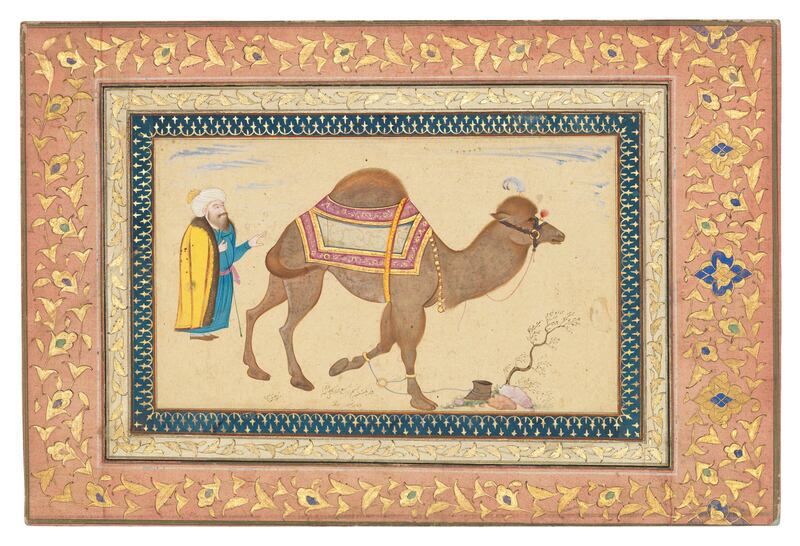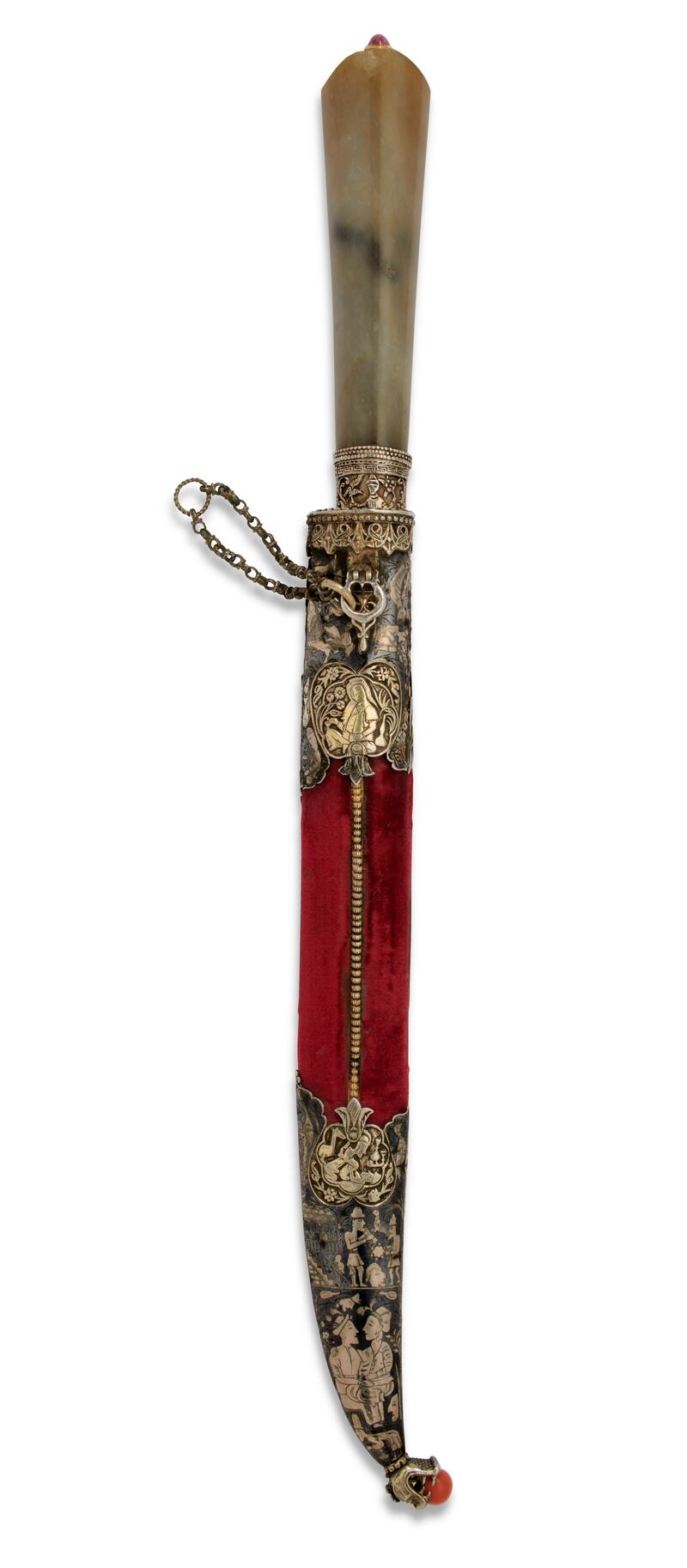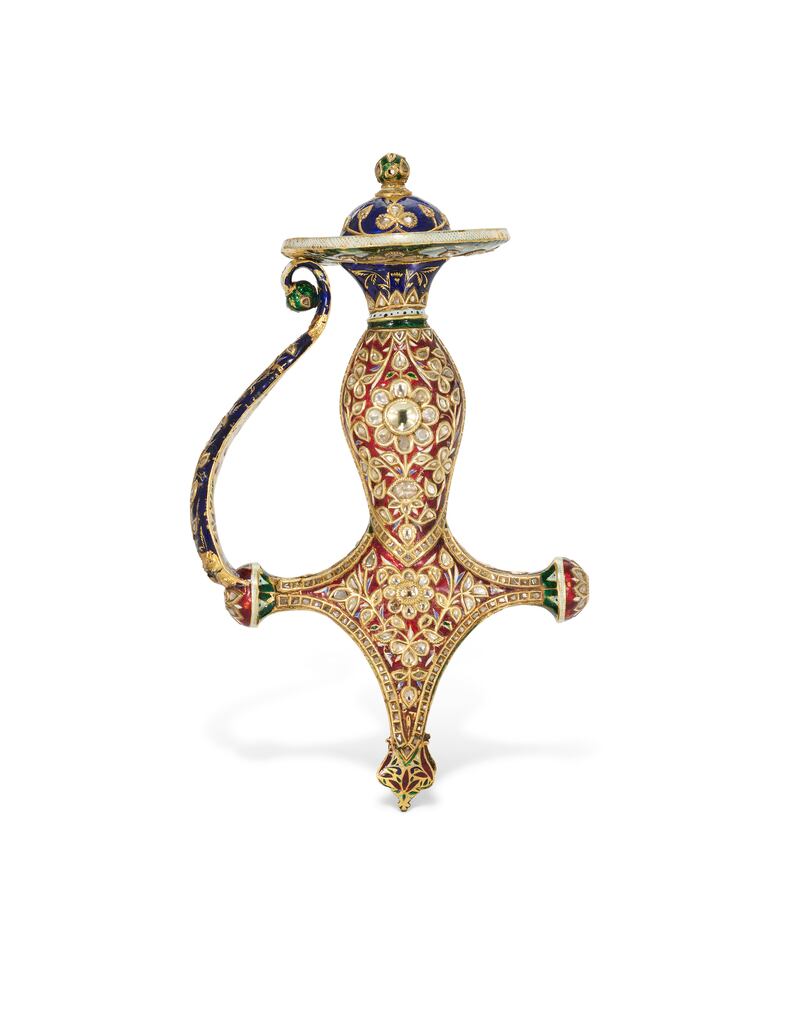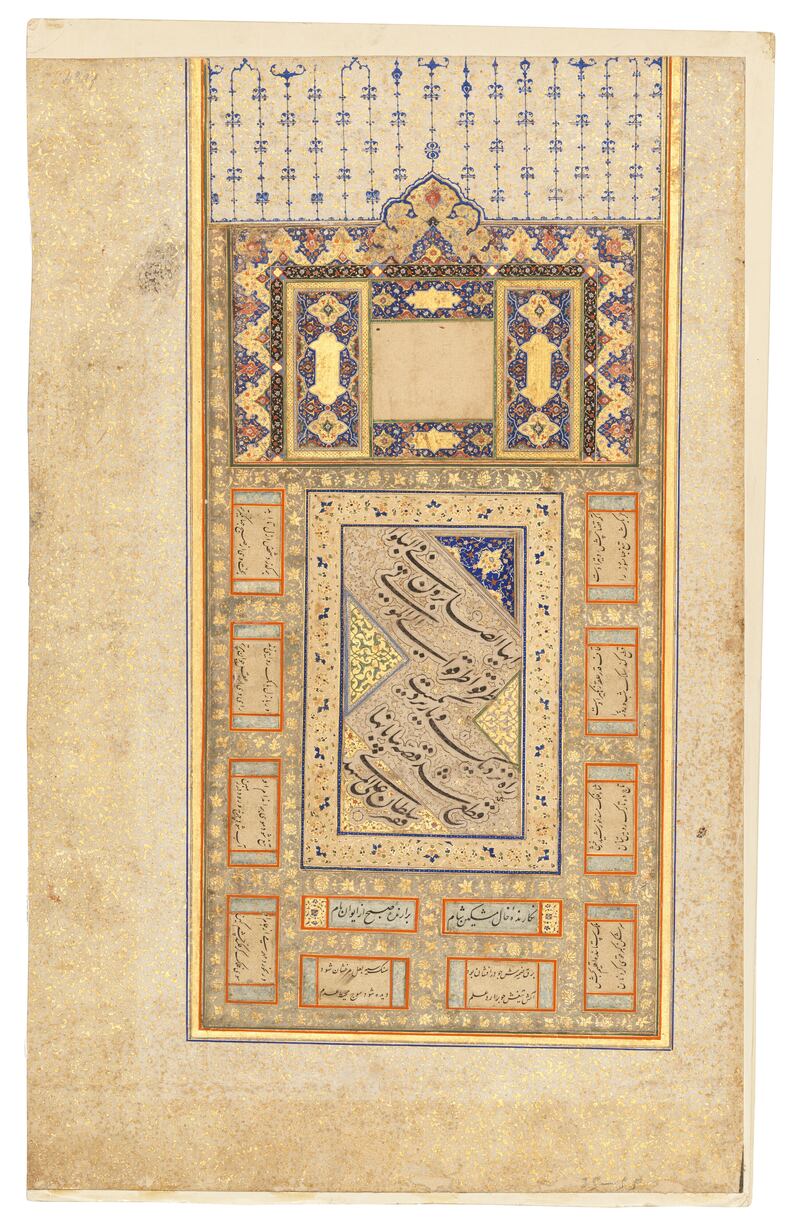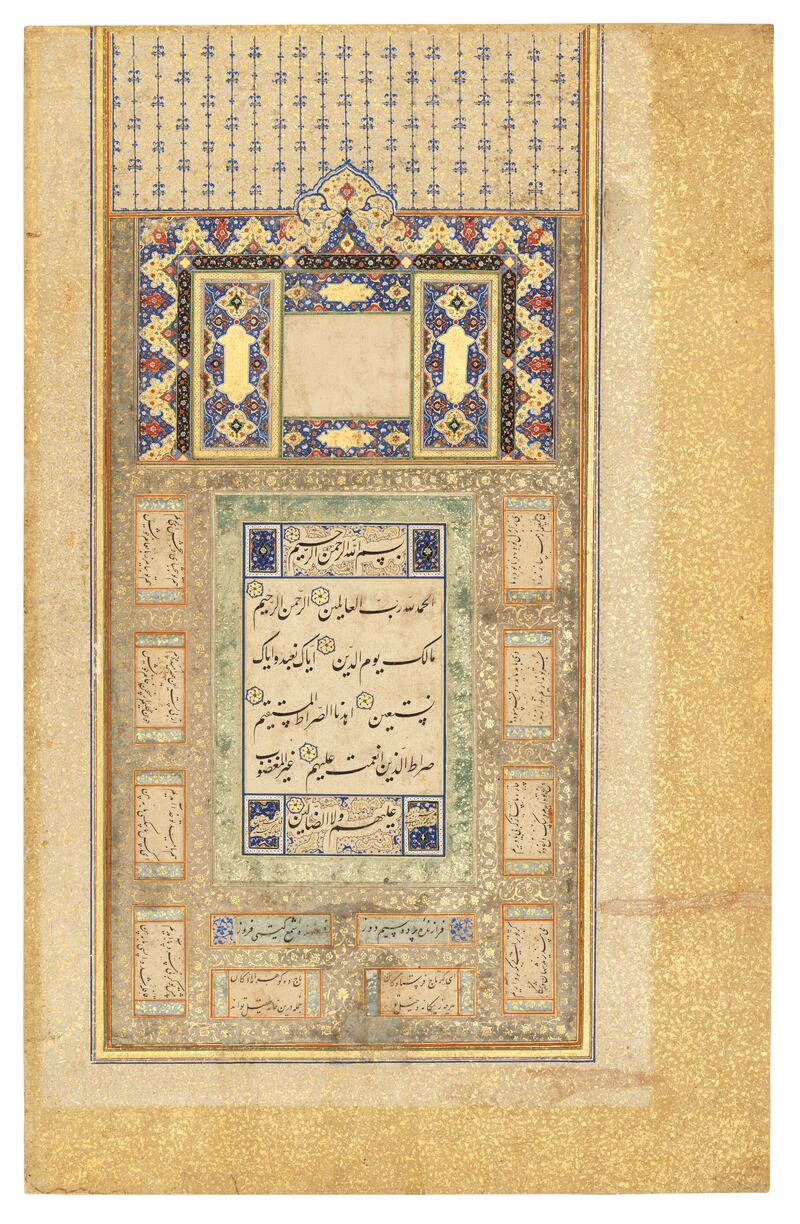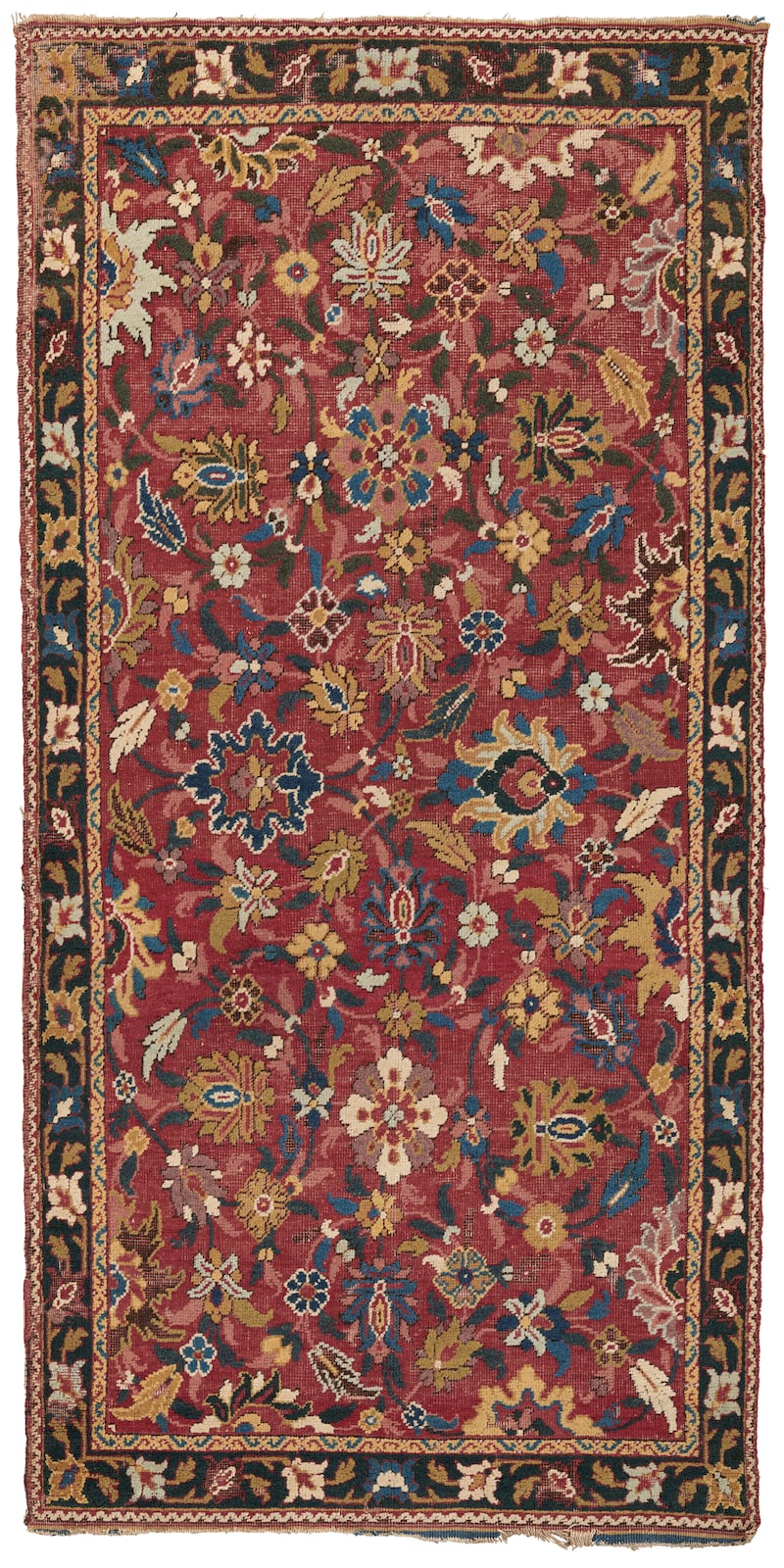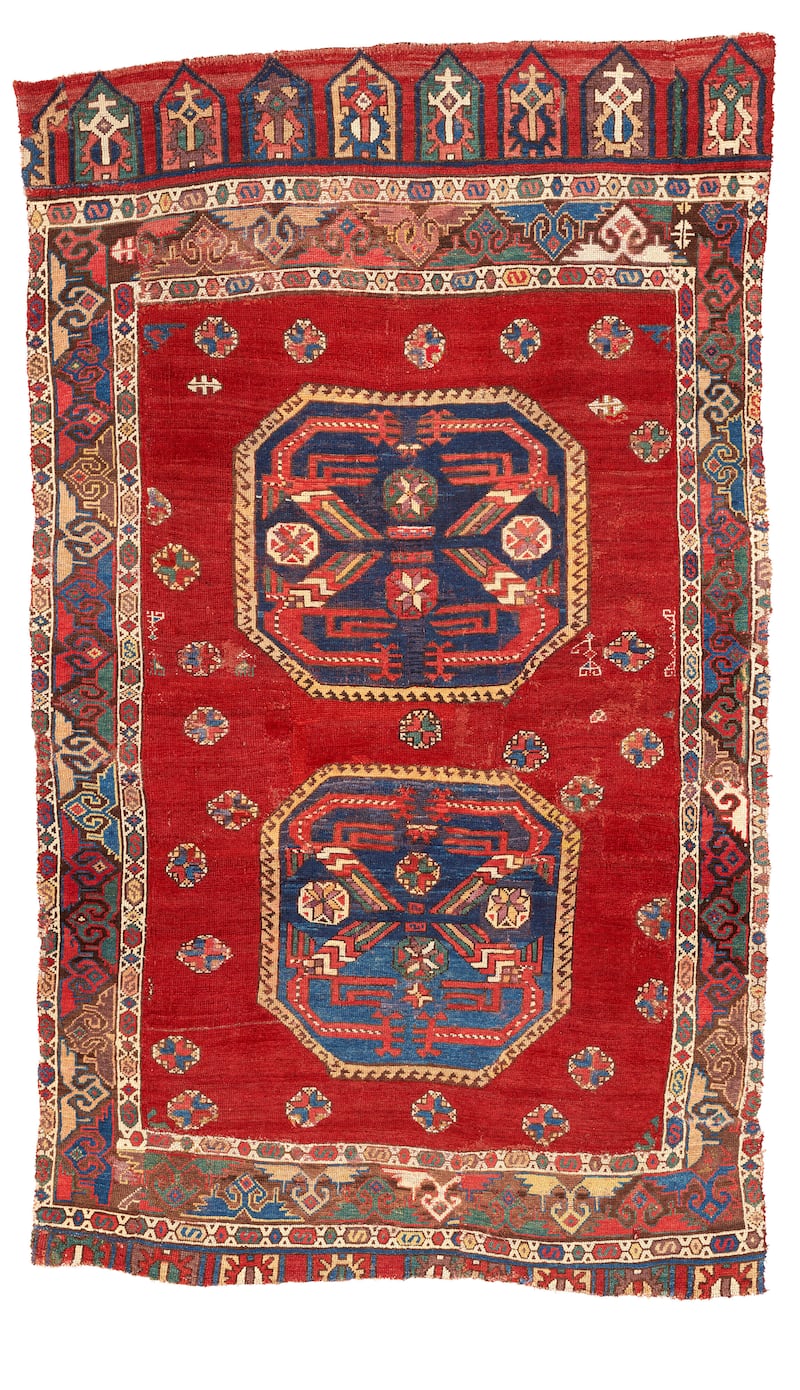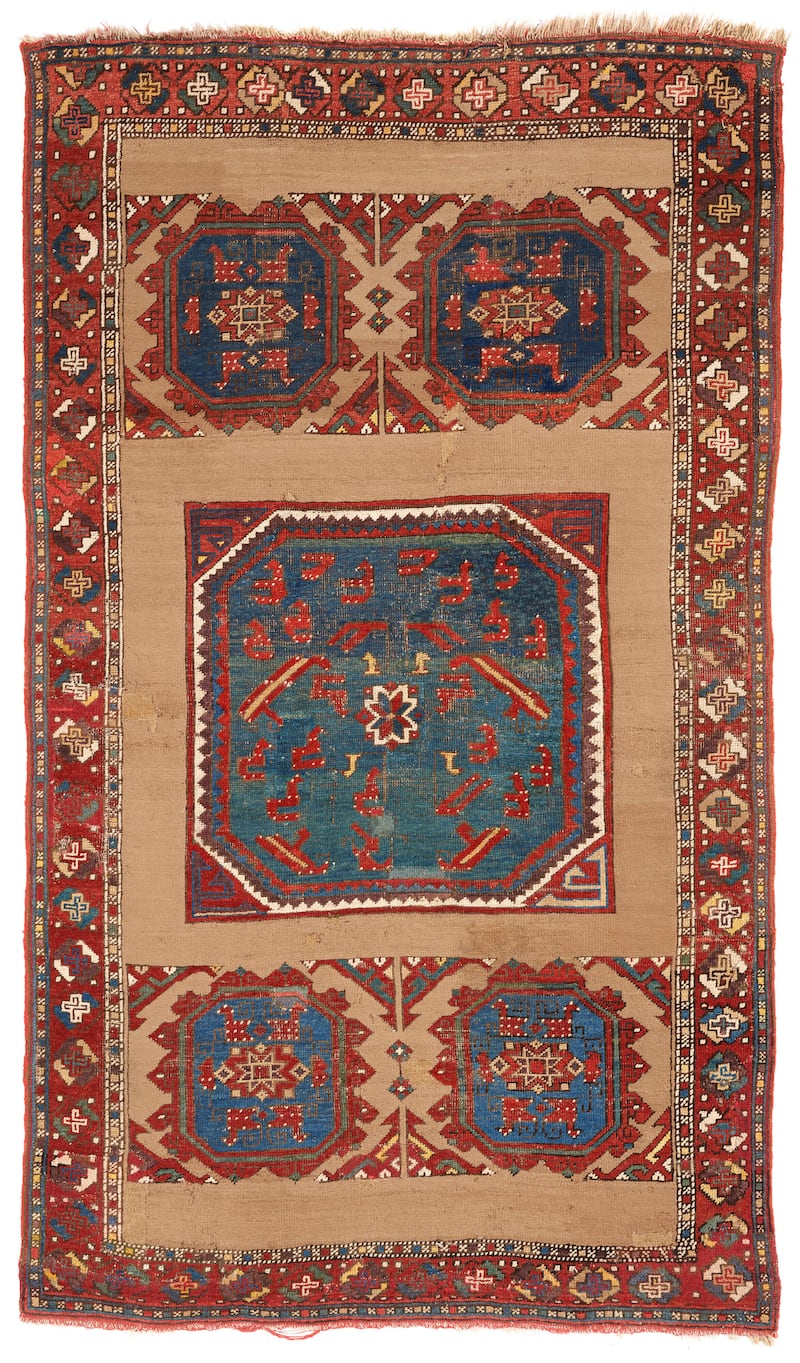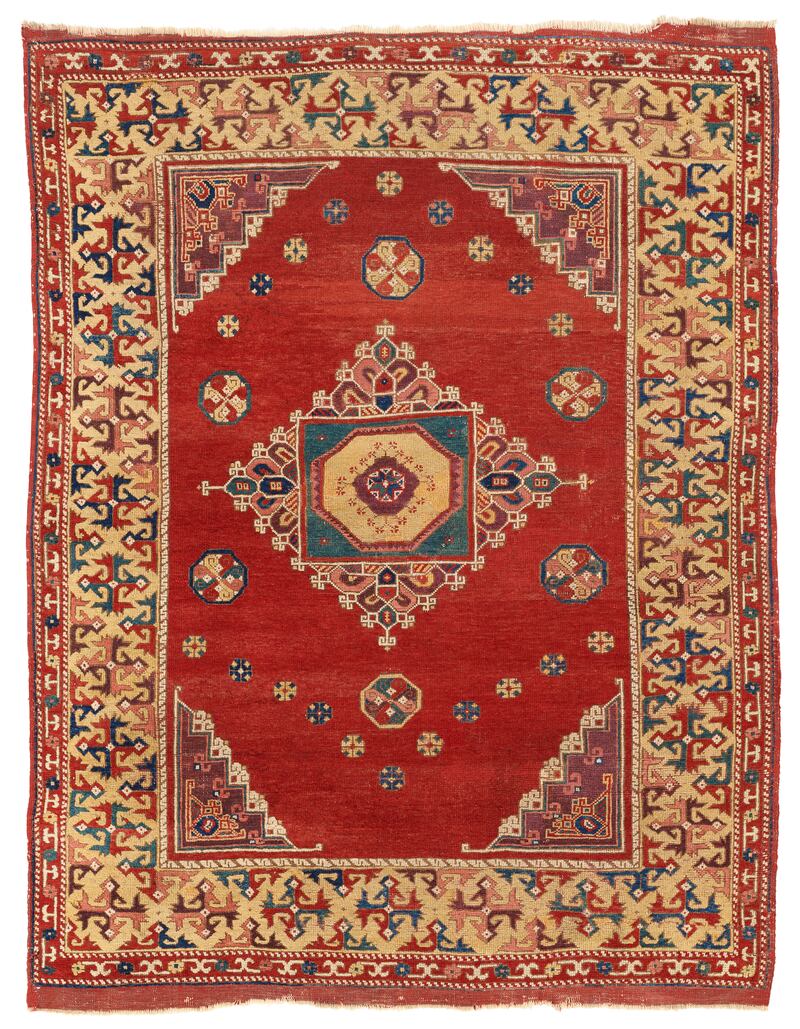An auction at Christie's in London will bring together 240 pieces from the Indian and Islamic worlds, each of them a memento from a fascinating time in regional history.
The range of art includes manuscripts, paintings, ceramics, metalwork and carpets dating from the 9th to the 19th centuries. The auction will be held on Thursday at Christie's on King Street.
Among the most expensive items in the collection is also one of the most mysterious — a finial from the fabled gold throne of Tipu Sultan that has an estimated price of between £300,000 and £500,000 ($374,413 and $624,022).
Although the throne of the 18th-century Indian Muslim ruler no longer exists, there are illustrations suggesting what it may have looked like. One is a portrait of Tipu Sultan dating to 1800 by Italian painter Anna Tonelli. It shows the ruler sitting cross-legged in the shade of an umbrella on the flat, octagonal throne — a platform raised above the ground by a 12-legged tiger, the roaring head of which is carved at the fore. The tiger’s menacing posture protects the sultan.
“Tiger stripes were [Tipu’s] royal insignia,” Sara Plumbly, director and head of the Islamic and Indian Art department at Christie’s King Street, says. “They would decorate all the courtly objects and weapons. You’d find tigers and their patterns employed in the architecture of palaces and mosques.
The throne is also decorated with a series of tiger-headed finials.
“We don’t actually have a precise idea of what the throne looked like, but eight of these finials decorated the top,” Plumbly says. “They were all taken after Tipu Sultan was defeated by the British and sadly the throne was taken apart.”
A few pieces survive today, including the finial which is lot 84 of the auction — they are the last remnants of the throne. It is difficult to appreciate the craftsmanship and lustre of the throne through Tonelli’s portrait. The crisp photographs of the finial in Christie’s catalogue depicts the decorative piece in due splendor, suggesting the lavishness that had made Tipu’s throne the stuff of legend.
The finial is meticulously crafted — it is covered with inlaid gold and set with rubies, emeralds and diamonds. It now stands on a marble stand with gilt metal fittings.
The first two lots of the sale are also striking. They are pages from an album of compilated calligraphy works. While the pages share borders and illuminations, they present unique artworks, with each piece signed by its respective artist. The works date back to the late 15th and early 16th centuries, with each estimated between £30,000 and £40,000.
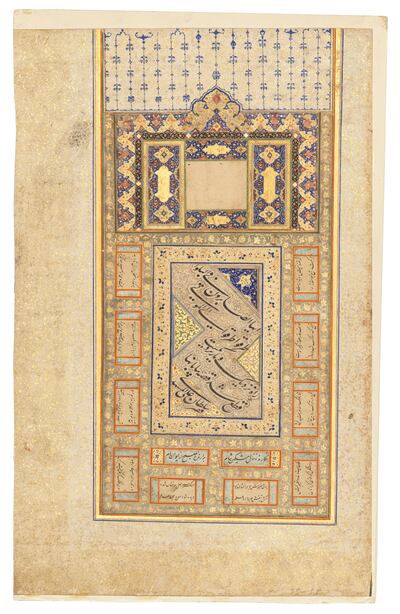
“They’re both the opening pages of what would have been a royal album,” Plumbly says. “Albums were the way that the Fatimid, Mughal and Ottoman courts preserved their collection. They would gather the works that they were their favourite in a book. The works didn’t have to speak to each other, but would come together by the borders. “
The works in the lot are examples by two of the most important Safavid artists, Sultan Ali Mashhadi and Shah Mahmud Nishapuri. The calligraphy presents Quranic verses, specifically Surat Al Fatiha. However, they wildly vary in style and employ calligraphy not traditionally used while transcribing the Quran.
Lot 25, meanwhile, depicts the story of King Solomon and Bilqis, the Queen of Sheba. Historians correlate Sheba with present-day Yemen and Ethiopia, where the kingdom of Saba reigned.
In Abrahamic accounts, the South Arabian queen visited Solomon’s court with gold, jewels and spices. She had heard of Solomon’s wisdom and wanted to test it herself. There are several accounts of how that meeting transpired. In the Quran, the encounter between the two royals ends with the heliolater queen coming to believe in God.
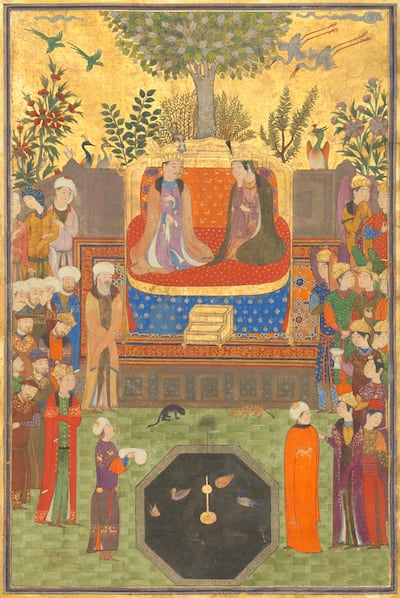
The 15th-century Timurid folio, estimated between £150,000 and £200,000, illustrates the meeting. The court is gathered on either side, whereas the Solomon and Bilqis are seated in the plush centre. The sky above them is made brilliant with gold leaf. Storks, songbirds, peacocks and flora decorate the background.
“This is one of the highlights of the sale,” Plumbly says. “It’s a Timurid painting. You don’t see a lot of full page Timurid paintings. You do see smaller examples, illustrative manuscripts, but to have a full page that is as colourful and well preserved as this is extremely rare.
“On top of that the subject is incredible,” she adds. “We see Solomon and the Queen of Sheba. It was a popular subject, retold by many cultures across the centuries. In Islamic culture, he is a king and a prophet. He is said to have converted the Queen of Sheba. The intensity of the palette is wonderful. The lines are so painterly and minute.”
While several artworks in the lot are estimated in the six figures, there are also plenty of less expensive options. These include illustrations that date back to Safavid Iran in the 15th century. Lot 28, estimated between £10,000 and £15,000, features three illustrations from Shahnameh, the epic poem written by Ferdowsi. Lot 29, on the other hand, features illustrations from Nizami’s Khamsa.
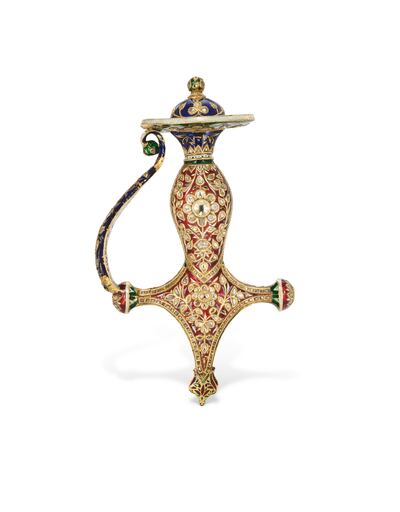
“These are Safavid paintings that one could acquire at a reasonable figure,” Plumbly says. “They’re both very vibrantly coloured, beautifully painted. Both of these lots, they are illustrations from books. Those books over time were split, very badly at times. The paintings ended up in different collections.”
Of the 240 lots, 100 feature carpets and rugs with origins ranging from India and the Caucasus to Persia and Anatolia.
The auction also features a strong selection of arms and armour, including bejeweled daggers and khanjars with Mughal designs, and meticulously enameled hilts from 19th-century India.
“There are so many aspects to the sale,” Plumbly says. “We have medieval objects. We have Indian paintings, Iznik pottery. We have a section of Ottoman works, from lot 120 to around 156. There are many group examples of pottery, textiles.
“We also have lots 155 and 166, which are associated with holy shrines. Lot 155 is a group of textiles that were woven to cover some of the most important places in Medina. Lot 166 is a fragment of a kiswah from Mecca.”
To view the entire collection of the Art of the Islamic and Indian Worlds auction, visit www.christies.com
